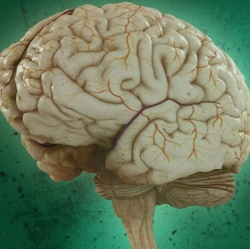
As intangible as they may seem, memories have a firm biological basis. According to textbook neuroscience, they form when neighboring brain cells send chemical communications across the synapses, or junctions, that connect them. Each time a memory is recalled, the connection is reactivated and strengthened.
The idea that synapses store memories has dominated neuroscience for more than a century, but a new study by scientists at the University of California, Los Angeles, may fundamentally upend it: instead memories may reside inside brain cells. If supported, the work could have major implications for the treatment of post-traumatic stress disorder (PTSD), a condition marked by painfully vivid and intrusive memories.
More than a decade ago scientists began investigating the drug propranolol for the treatment of PTSD. Propranolol was thought to prevent memories from forming by blocking production of proteins required for long-term storage. Unfortunately, the research quickly hit a snag. Unless administered immediately after the traumatic event, the treatment was ineffective.
Lately researchers have been crafting a work-around: evidence suggests that when someone recalls a memory, the reactivated connection is not only strengthened but becomes temporarily susceptible to change, a process called memory reconsolidation. Administering propranolol (and perhaps also therapy, electrical stimulation and certain other drugs) during this window can enable scientists to block reconsolidation, wiping out the synapse on the spot.
The possibility of purging recollections caught the eye of David Glanzman, a neurobiologist at U.C.L.A., who set out to study the process in Aplysia, a sluglike mollusk commonly used in neuroscience research. Glanzman and his team zapped Aplysia with mild electric shocks, creating a memory of the event expressed as new synapses in the brain. The scientists then transferred neurons from the mollusk into a petri dish and chemically triggered the memory of the shocks in them, quickly followed by a dose of propranolol.
Initially the drug appeared to confirm earlier research by wiping out the synaptic connection. But when cells were exposed to a reminder of the shocks, the memory came back at full strength within 48 hours. “It was totally reinstated,” Glanzman says. “That implies to me that the memory wasn’t stored in the synapse.” The results were recently published in the online open-access journal eLife.
If memory is not located in the synapse, then where is it? When the neuroscientists took a closer look at the brain cells, they found that even when the synapse was erased, molecular and chemical changes persisted after the initial firing within the cell itself. The engram, or memory trace, could be preserved by these permanent changes. Alternatively, it could be encoded in modifications to the cell’s DNA that alter how particular genes are expressed. Glanzman and others favor this reasoning.
